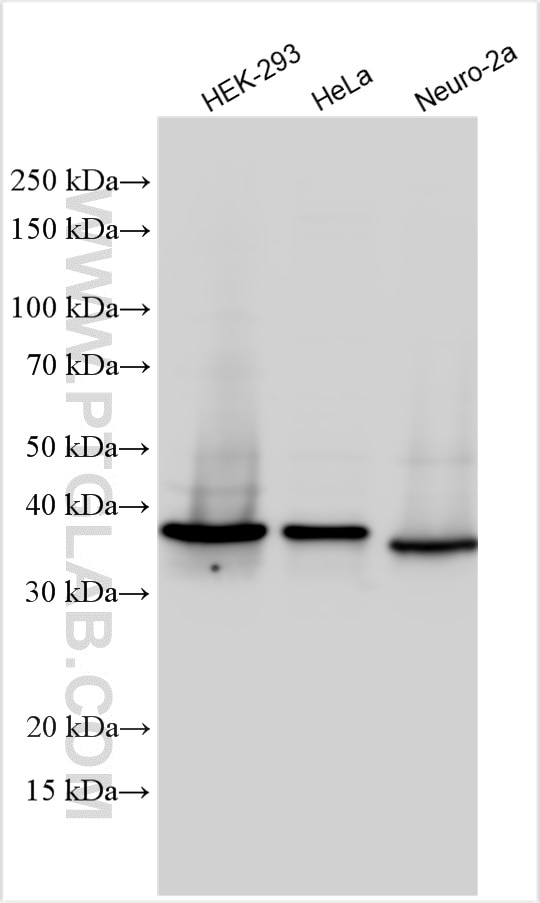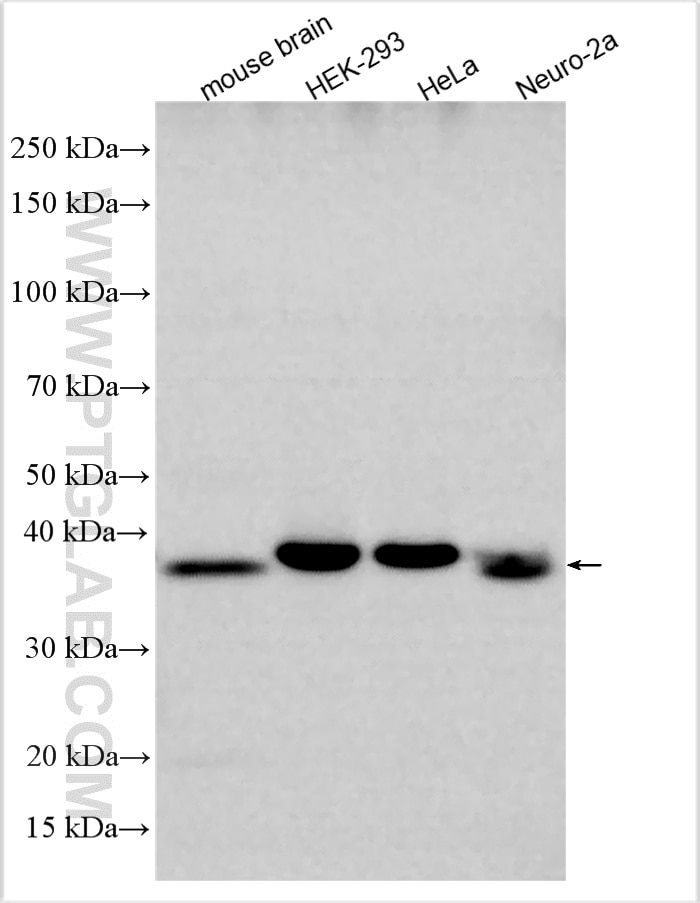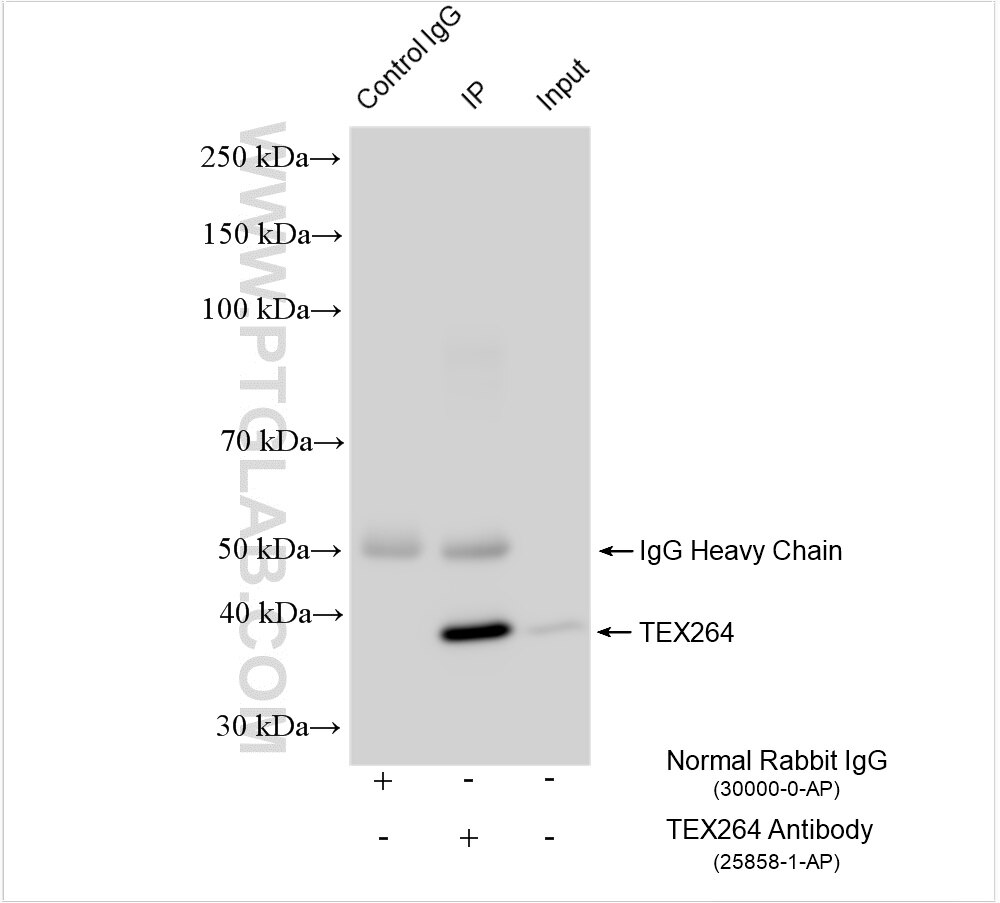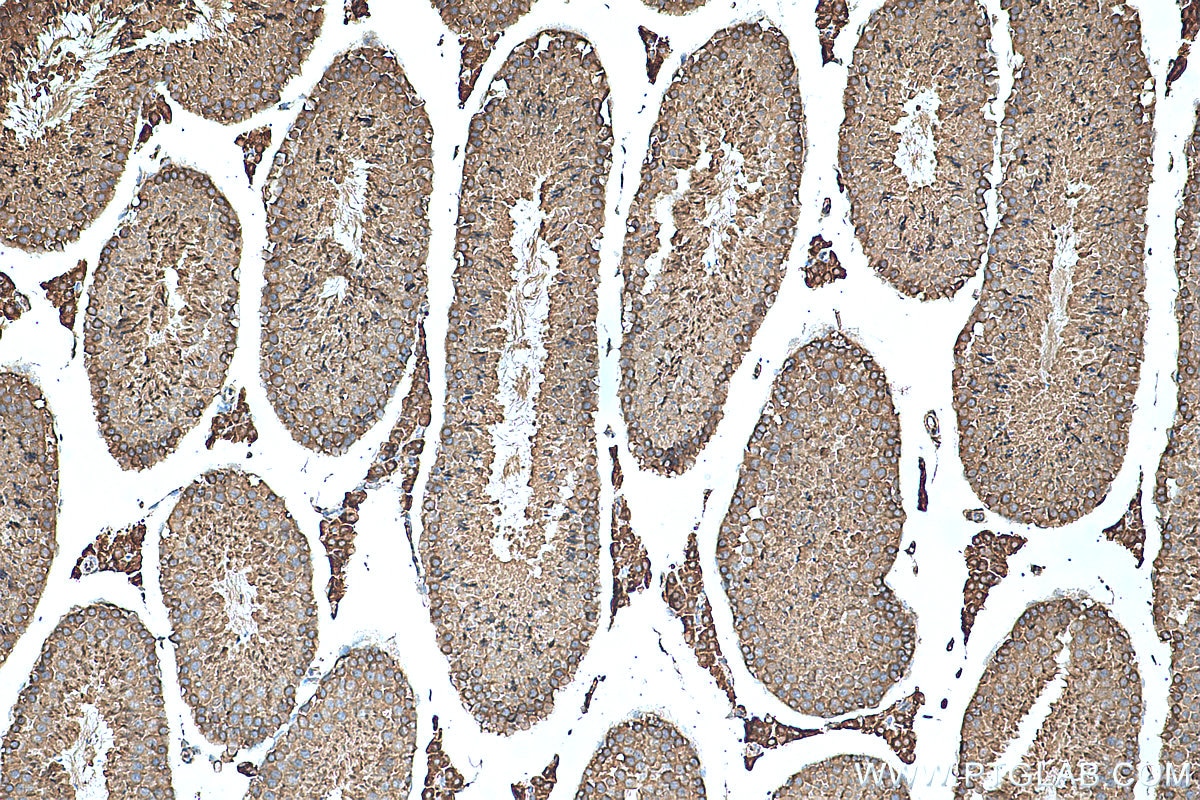Tested Applications
| Positive WB detected in | HEK-293 cells, mouse brain tissue, HeLa cells, Neuro-2a cells |
| Positive IP detected in | HEK-293 cells |
| Positive IHC detected in | mouse testis tissue Note: suggested antigen retrieval with TE buffer pH 9.0; (*) Alternatively, antigen retrieval may be performed with citrate buffer pH 6.0 |
| Positive IF/ICC detected in | U-251 cells |
Recommended dilution
| Application | Dilution |
|---|---|
| Western Blot (WB) | WB : 1:1000-1:4000 |
| Immunoprecipitation (IP) | IP : 0.5-4.0 ug for 1.0-3.0 mg of total protein lysate |
| Immunohistochemistry (IHC) | IHC : 1:50-1:500 |
| Immunofluorescence (IF)/ICC | IF/ICC : 1:200-1:800 |
| It is recommended that this reagent should be titrated in each testing system to obtain optimal results. | |
| Sample-dependent, Check data in validation data gallery. | |
Published Applications
| KD/KO | See 1 publications below |
| WB | See 11 publications below |
| IF | See 4 publications below |
Product Information
25858-1-AP targets TEX264 in WB, IHC, IF/ICC, IP, ELISA applications and shows reactivity with human, mouse samples.
| Tested Reactivity | human, mouse |
| Cited Reactivity | human, mouse |
| Host / Isotype | Rabbit / IgG |
| Class | Polyclonal |
| Type | Antibody |
| Immunogen |
CatNo: Ag23027 Product name: Recombinant human TEX264 protein Source: e coli.-derived, PGEX-4T Tag: GST Domain: 34-313 aa of BC008742 Sequence: VEVSAGSPPIRNVTVAYKFHMGLYGETGRLFTESCSISPKLRSIAVYYDNPHMVPPDKCRCAVGSILSEGEESPSPELIDLYQKFGFKVFSFPAPSHVVTATFPYTTILSIWLATRRVHPALDTYIKERKLCAYPRLEIYQEDQIHFMCPLARQGDFYVPEMKETEWKWRGLVEAIDTQVDGTGADTMSDTSSVSLEVSPGSRETSAATLSPGASSRGWDDGDTRSEHSYSESGASGSSFEELDLEGEGPLGESRLDPGTEPLGTTKWLWEPTAPEKGKE Predict reactive species |
| Full Name | testis expressed 264 |
| Calculated Molecular Weight | 313 aa, 34 kDa |
| Observed Molecular Weight | 37 kDa |
| GenBank Accession Number | BC008742 |
| Gene Symbol | TEX264 |
| Gene ID (NCBI) | 51368 |
| RRID | AB_2880272 |
| Conjugate | Unconjugated |
| Form | Liquid |
| Purification Method | Antigen affinity purification |
| UNIPROT ID | Q9Y6I9 |
| Storage Buffer | PBS with 0.02% sodium azide and 50% glycerol, pH 7.3. |
| Storage Conditions | Store at -20°C. Stable for one year after shipment. Aliquoting is unnecessary for -20oC storage. 20ul sizes contain 0.1% BSA. |
Background Information
TEX264 (testes expressed gene 264) is a single-pass transmembrane protein, consisting of an N-terminal hydrophobic region, a gyrase inhibitory (GyrI)-like domain, and a loosely structured C terminus. TEX264 was first identified as an endoplasmic reticulum (ER)-resident Atg8-family-binding protein that mediates the degradation of portions of the ER during starvation (i.e., reticulophagy). TEX264 was identified as a cofactor of VCP/p97 ATPase that promotes the repair of covalently trapped TOP1 (DNA topoisomerase 1)-DNA crosslinks.
Protocols
| Product Specific Protocols | |
|---|---|
| IF protocol for TEX264 antibody 25858-1-AP | Download protocol |
| IHC protocol for TEX264 antibody 25858-1-AP | Download protocol |
| IP protocol for TEX264 antibody 25858-1-AP | Download protocol |
| WB protocol for TEX264 antibody 25858-1-AP | Download protocol |
| Standard Protocols | |
|---|---|
| Click here to view our Standard Protocols |
Publications
| Species | Application | Title |
|---|---|---|
Nat Commun AMFR-mediated Flavivirus NS2A ubiquitination subverts ER-phagy to augment viral pathogenicity | ||
ACS Chem Neurosci Anti-Inflammatory Anthranilate Analogue Enhances Autophagy through mTOR and Promotes ER-Turnover through TEX264 during Alzheimer-Associated Neuroinflammation.
| ||
Biomedicines Enhancement of TEX264-Mediated ER-Phagy Contributes to the Therapeutic Effect of Glycycoumarin against APA Hepatotoxicity in Mice. | ||
Mol Biol Cell Lysosome Docking to WIPI1 Rings and ER-connected Phagophores Occurs During DNAJB12 and GABARAP-Dependent Selective Autophagy of Misfolded P23H-Rhodopsin. | ||
Redox Biol Adaptive responses of neuronal cells to chronic endoplasmic reticulum (ER) stress |














